Plastic pollution has managed to invade even the most remote areas of our environment and has also been reported in several tissues of the human body. Plastic production levels have exploded since the 1950s and continue to rise. The problem is so pervasive and daunting that we sometimes find ourselves placing a little too much hope in solutions that aren’t really solutions at all.
As is often the case, industry and the major polluters (big brands, fossil fuel and petrochemical companies) are lying in wait to promote false solutions that allow them to continue business as usual and continue to make indecent profits and pollute with impunity while continuing to deny their responsibility. From recycling to bioplastics, here are 4 examples of approaches that fail to tackle the scale of the global plastic pollution crisis.
1. Recycling
Recycling has long been heralded as a solution to reduce plastic waste. Especially by corporations like Coca-Cola, PepsiCo, Nestlé, and Unilever, and industry front groups who promote plastic recycling as the solution to plastic waste for decades.
However, the reality is far from ideal. Globally, only 9% of plastic gets recycled. The rest is burned, buried, or ends up in the environment, including at sea. Even in the most advanced countries in this field, the recycling rate for plastics collected by households is often far less than 50%, with very little of that converted back into packaging. Additionally, the quality of recycled plastic is often inferior, making it less desirable for manufacturers. Relying on recycling perpetuates the linear “take-make-dispose” model of consumption, rather than addressing the root cause of overproduction and consumption of plastic.
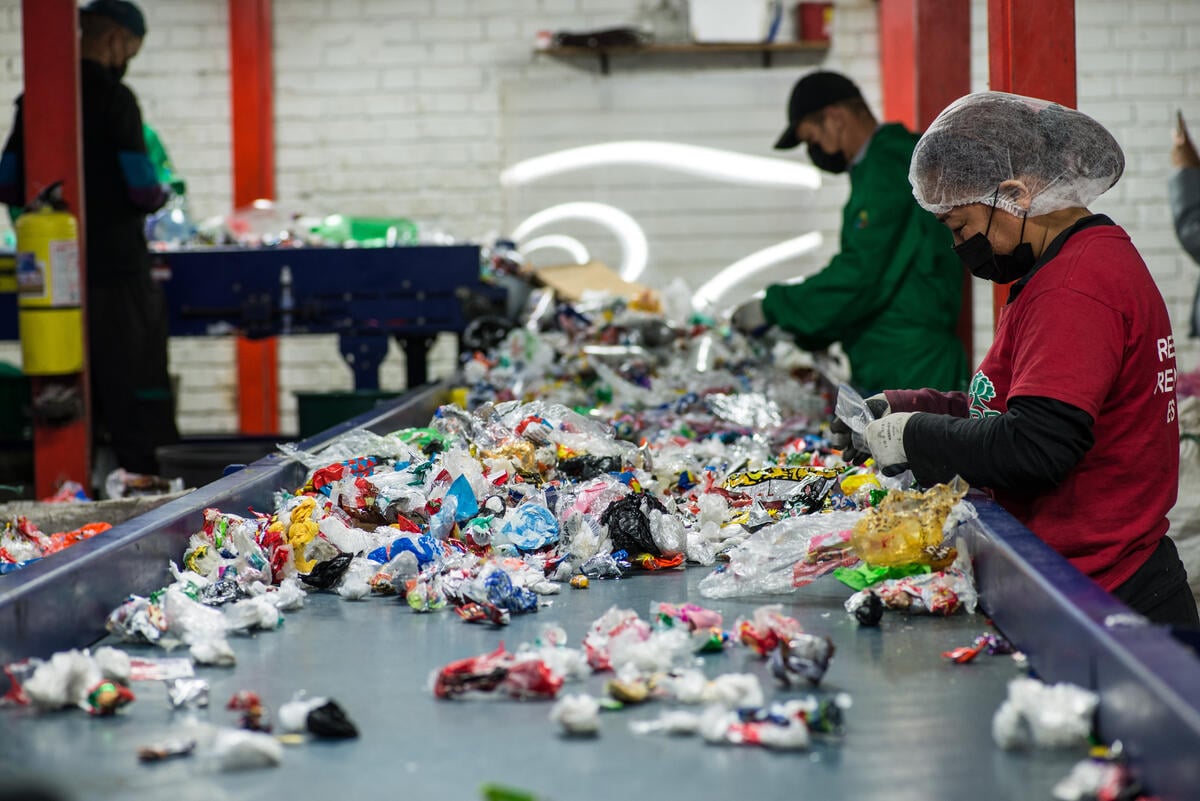 Waste management and recycling in Bogotá, Colombia. © Juan Pablo Eijo / Greenpeace
Waste management and recycling in Bogotá, Colombia. © Juan Pablo Eijo / GreenpeaceChemical recycling, touted as a revolutionary solution by industry representatives – such as PlasticsEurope, the European lobby for plastics producers here, involves breaking down plastic into its molecular components to create new materials. But the process is energy-intensive and relies on complex chemical reactions, raising concerns about environmental impact and scalability. Moreover, chemical recycling still produces by-products and emissions, contributing to pollution in different forms.
Mechanical and chemical recycling of plastic waste fails because plastic waste is extremely difficult to collect, virtually impossible to sort for recycling, environmentally harmful to reprocess, often made of and contaminated by toxic materials, and not economical to recycle.
2. Clean-up initiatives
Beach clean-ups and river sweeps are commendable efforts to remove plastic waste from the environment. The most famous initiative of this type is undoubtedly The Ocean Cleanup, a nonprofit organisation founded by Boyan Slat, with the mission of developing advanced technologies to rid the world’s oceans of plastic pollution thanks to passive ocean cleanup systems, which utilise natural oceanic forces such as currents and wind to capture and concentrate plastic debris. The project’s history is littered with failures, and it is regularly criticised.
Seeing the results of clean-up operations is always gratifying and heart-warming. Greenpeace organisations and the people who work or volunteer for them support and take part in clean-up initiatives in different parts of the world.
However, these initiatives – including The Ocean Cleanup and the millions of dollars raised by the organisation – are akin to mopping the floor while the tap is still running. They address the symptoms of plastic pollution but do little to prevent its continuous influx into ecosystems. Without upstream interventions to curb plastic production and consumption, clean-up efforts will remain a perpetual cycle, unable to keep pace with the sheer volume of plastic entering the environment.
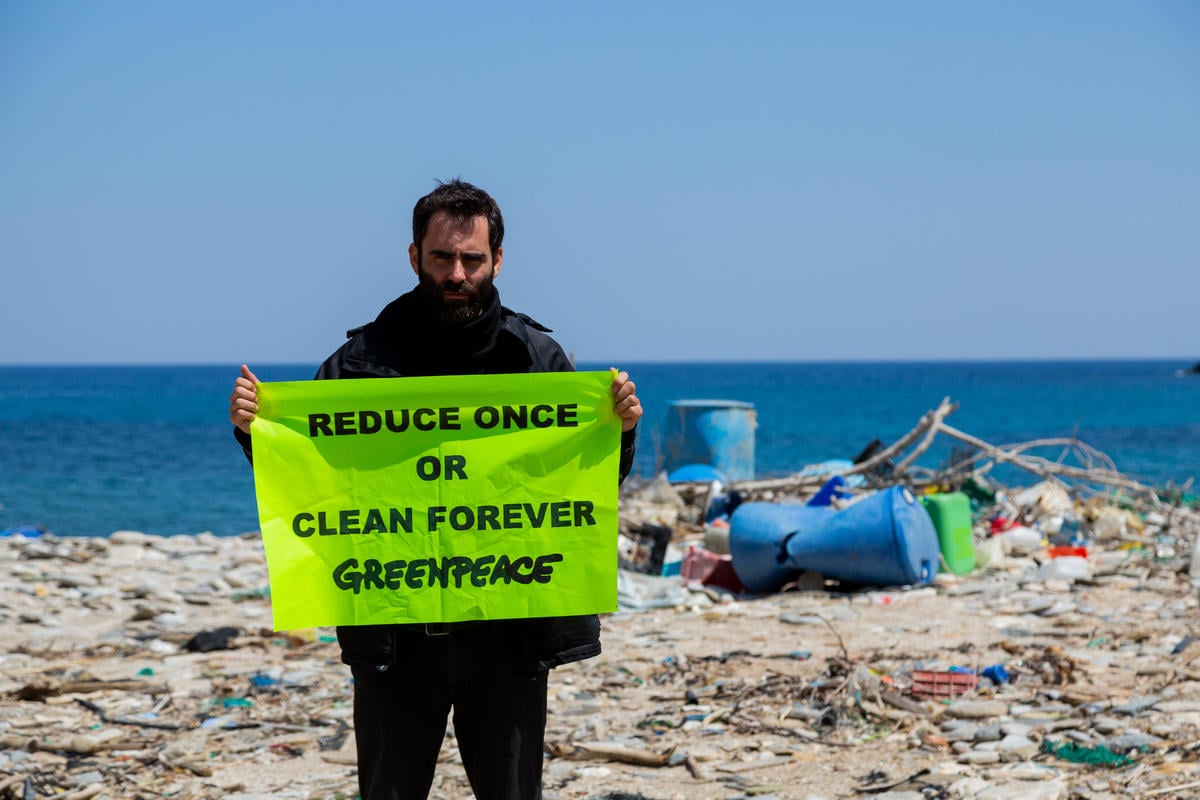 In September 2018, as part of the Break Free From Plastic global brand audit conducted in 42 countries on six continents, Greenpeace Greece cleaned up the beach of Charakas, in Evia, Greece. The volunteers collected data for 3,000 pieces of plastic and exposed the companies whose plastic products had ended up where they shouldn’t be. In April 2019, we revisited the beach to record its condition and plastic has already returned in large quantities. © Constantinos Stathias / Greenpeace
In September 2018, as part of the Break Free From Plastic global brand audit conducted in 42 countries on six continents, Greenpeace Greece cleaned up the beach of Charakas, in Evia, Greece. The volunteers collected data for 3,000 pieces of plastic and exposed the companies whose plastic products had ended up where they shouldn’t be. In April 2019, we revisited the beach to record its condition and plastic has already returned in large quantities. © Constantinos Stathias / GreenpeaceThese initiatives can be very useful when they make it possible to identify the most common sources of plastic pollution and which companies are the biggest contributors to plastic pollution. Indeed in this case the goal is precisely to hold companies accountable for the plastic waste generated by their products and packaging and push for systemic change.
3. Bioplastics
Bioplastics are defined as plastic materials that are either partly or wholly derived from renewable biomass like plants or are biodegradable or are both. Biodegradable plastics seem like a promising solution to the plastic pollution problem but they’re not a silver bullet.
While these plastics can break down into smaller pieces over time, they often require specific conditions to do so, such as high temperatures and certain microbes that are not readily available in most environments. Researchers find many “biodegradable” plastics end up in landfills or oceans, where they persist for years without degrading significantly. According to studies, they can create a lot of nano- and micro-plastics.
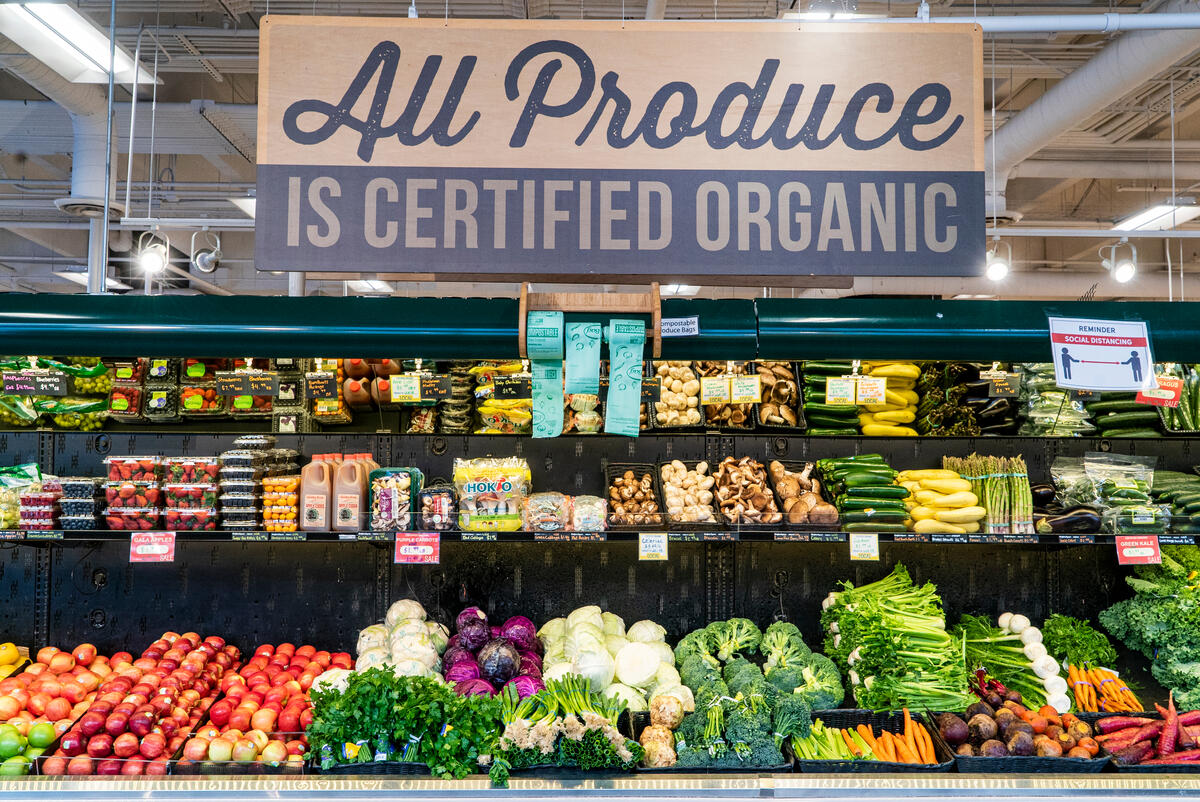 Compostable bags for items in a US grocery store in Washington D.C. © Tim Aubry / Greenpeace
Compostable bags for items in a US grocery store in Washington D.C. © Tim Aubry / GreenpeaceMoreover, the production of biodegradable plastics can still rely on fossil fuels. Bioplastics use should not put food security (or food sovereignty) at risk: in other words, land being used to grow or source material for bio-plastics should not compete with land needed for producing food and feeding local communities. The social and ecological footprint of bioplastics is not neutral.
In the context of waste prevention and recycling, proposing to replace fossil-based plastics with bio-based equivalents risks distracting from and delaying real source reduction solutions by promoting the production of plastic from other sources rather than reducing use of plastics. Ultimately, bioplastics replace a single-use petroleum-based plastic with another single-use bioplastic product. The only solution to our disposable culture is a large-scale transition to a reuse and refill economy.
4. Plastic-eating bacteria
Yes, you read that right. The discovery of plastic-eating bacteria by Japanese scientists in 2001 sparked hope for a natural solution to plastic pollution. Judging by the many articles and posts on the subject that regularly go viral on social networks, this is still the case.
However, deploying these microbes in the environment poses significant risks. Introducing those that have been genetically modified into ecosystems could have unforeseen consequences, disrupting delicate ecological balances. Moreover, the efficacy of these bacteria in degrading plastic on a large scale remains uncertain. While plastic-eating bacteria have shown promising results in the highly restricted and specific environment of the scientific laboratory, extending the process to industrial scale is a completely different story (which may remind you of other false solutions, such as carbon capture and storage or nuclear fusion).
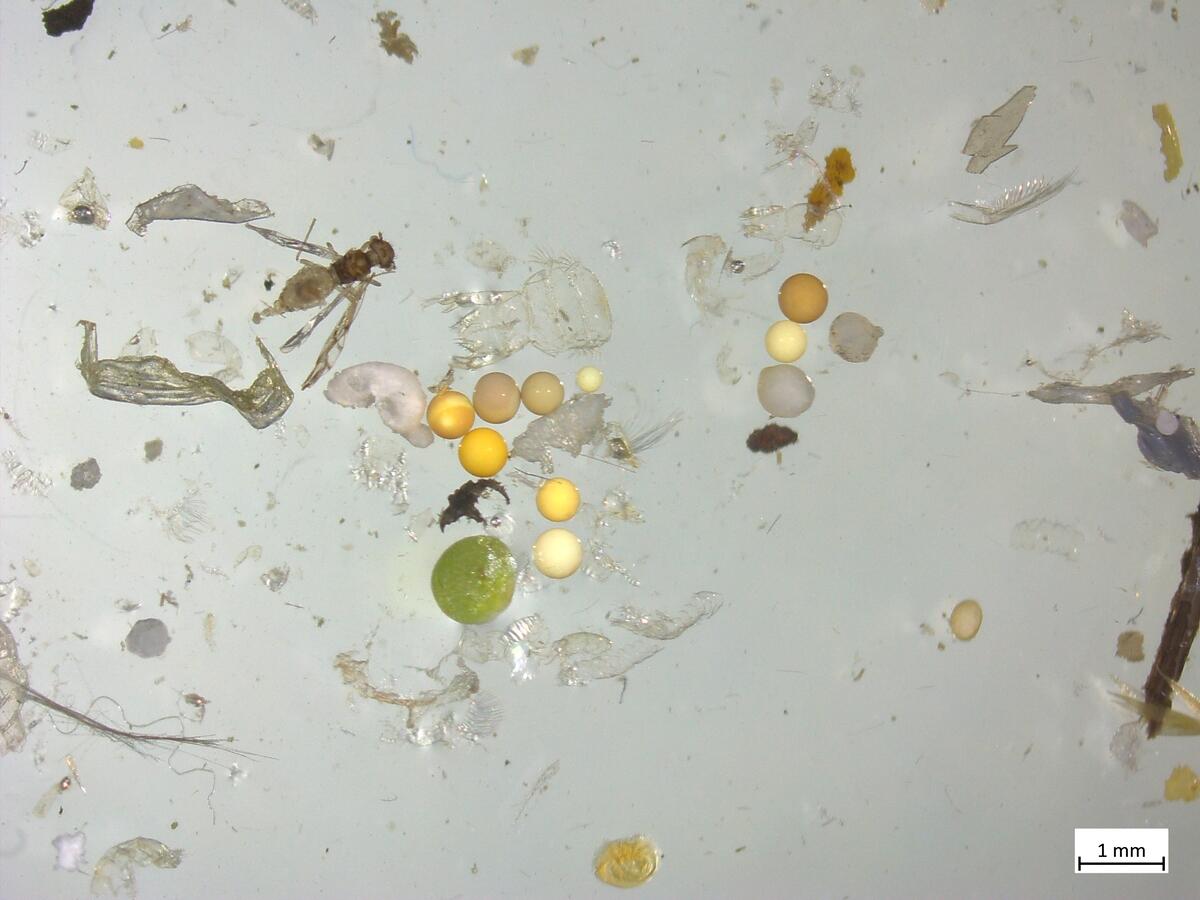 Microplastics under the microscope from water samples taken by Greenpeace Germany from the River Rhine. © Greenpeace
Microplastics under the microscope from water samples taken by Greenpeace Germany from the River Rhine. © GreenpeaceFinally, relying on biological agents to clean up our mess is once again akin to treating symptoms rather than addressing the underlying problem of excessive plastic usage.
Recycling, clean-ups, bioplastics, or plastic-eating bacteria all have limitations and drawbacks that underscore the need for a paradigm shift. What people and the planet urgently need is a global Plastics Treaty that tackles plastic pollution at its source by drastically reducing production and massively enabling reuse and refill systems.
Eight out of 10 people support cutting plastic production. Governments must listen to them.
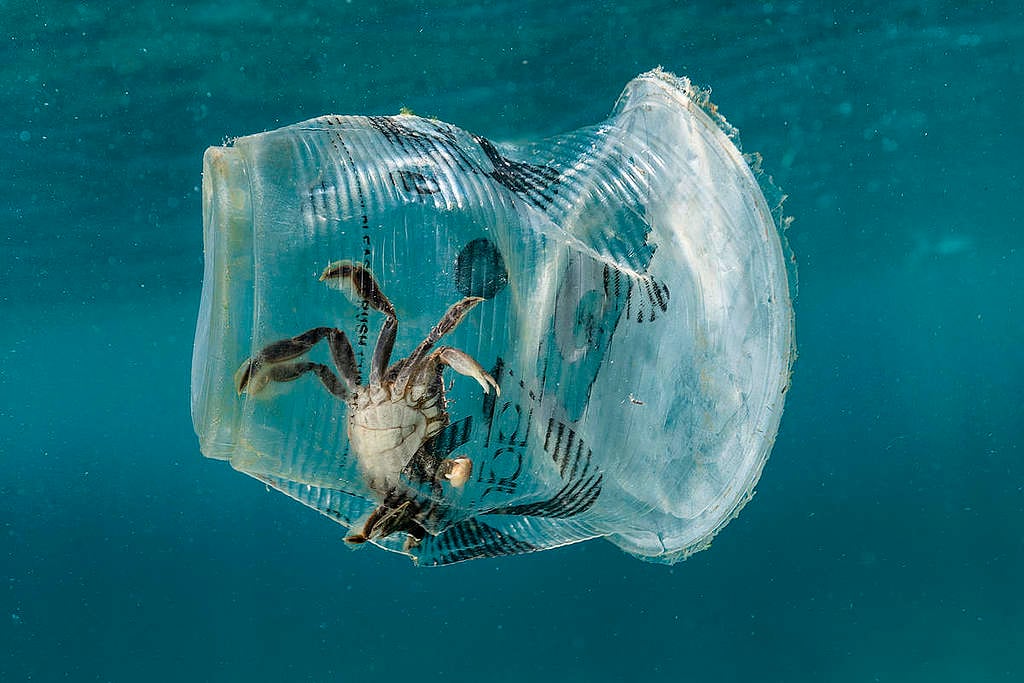
Ask world leaders to support a strong global plastic treaty that addresses the whole life cycle of plastic.

 1 week ago
25
1 week ago
25


